Hey there! Have you ever wondered about the historical landmarks of Suriname and what mysteries they hold? Well, get ready to dive into the rich history of this fascinating country!
Suriname, located on the northeastern coast of South America, is home to several remarkable historical landmarks that give us a glimpse into its diverse past. From the architectural wonders of Paramaribo, the capital city, to the preserved plantations that speak of the country’s colonial past, there’s so much to explore and learn about.
In Paramaribo, you’ll find the unique blend of Dutch and Caribbean architectural styles, which is a testament to Suriname’s colonial history. Walking through the city streets, you can admire the elegant facades of iconic buildings like the Presidential Palace and the Fort Zeelandia. These structures not only showcase the European influence but also symbolize the struggles and triumphs that Suriname has experienced throughout the centuries.
But the historical significance of Suriname doesn’t stop at its capital city. Venture further into the countryside, and you’ll encounter the plantations that once thrived during the era of slavery. These plantations, such as the famous Mariënburg and Frederiksdorp, provide a haunting yet important reminder of the country’s dark past. Exploring these sites allows us to reflect on the horrors of slavery while also recognizing the strength and resilience of those who endured.
So, get ready to uncover the captivating history of Suriname as we delve deeper into its historical landmarks. From Dutch architecture to the remnants of slavery, you’ll gain a deeper appreciation for the rich tapestry of this South American nation. Stay tuned for the rest of the article, where we’ll explore each landmark in detail and unveil the stories they hold.
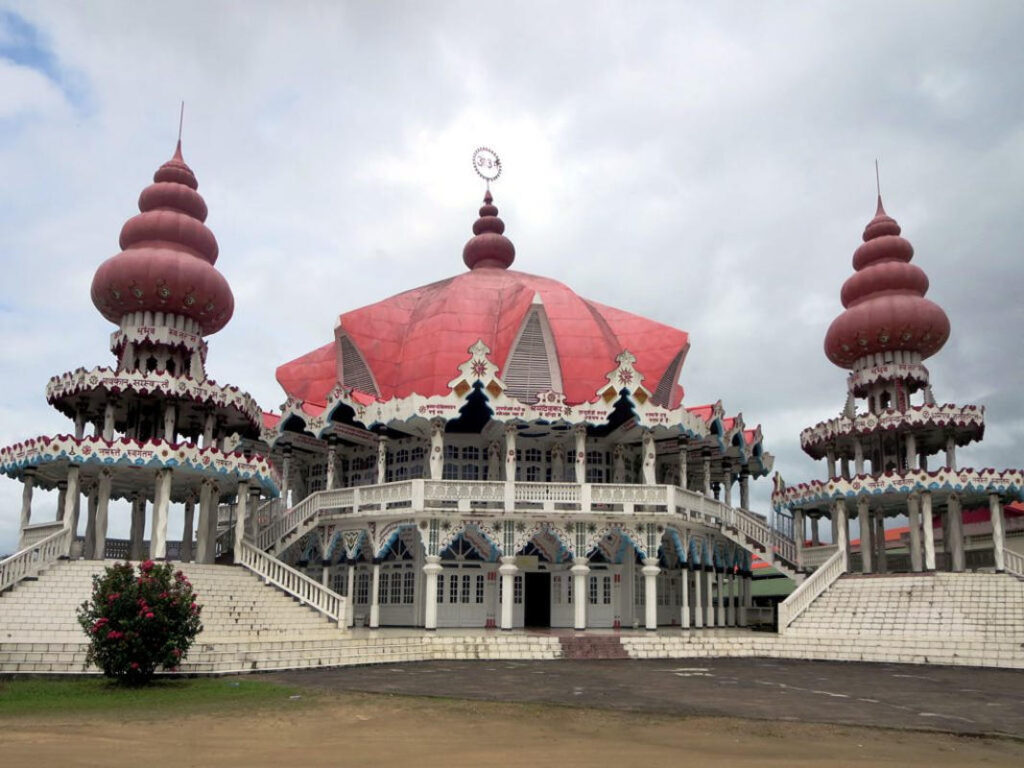
Introduction
Suriname, a hidden gem nestled within the heart of South America, boasts a rich cultural heritage that is truly enchanting. This small country is home to a myriad of historical landmarks, each with its own unique significance and story to tell. From the bustling streets of Paramaribo to the serene natural wonders of Brownsberg Nature Park, there is an abundance of attractions waiting to be explored. Join us on a journey as we unveil the past and discover the historical landmarks of Suriname.
Suriname’s Rich Cultural Heritage
Suriname is a melting pot of cultures, where people of diverse backgrounds live harmoniously together. The country’s cultural heritage is a testament to its complex history, which saw the arrival of various groups such as the indigenous peoples, the Dutch colonialists, and the African slaves. This fusion of cultures has shaped Suriname’s identity, making it a vibrant tapestry of traditions, languages, and customs.
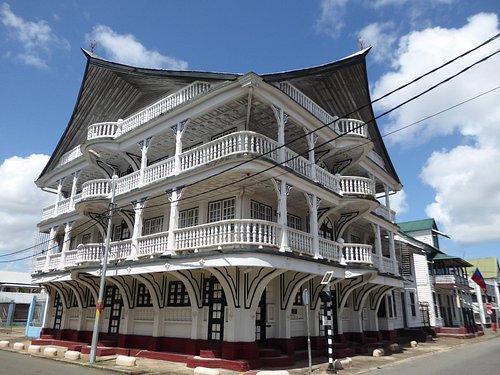
Significance of Historical Landmarks
Historical landmarks play a crucial role in preserving Suriname’s past and ensuring that future generations continue to appreciate and cherish their cultural heritage. These landmarks serve as reminders of the country’s journey and the struggles faced by its people. They also provide valuable insights into the social, political, and economic changes that have shaped Suriname over the centuries.
Paramaribo: A Journey Through Time
Historic Inner City of Paramaribo
The Historic Inner City of Paramaribo, a UNESCO World Heritage Site, is a treasure trove of historical landmarks. As you stroll through its cobblestone streets, you will be transported back in time to the Dutch colonial era. The city’s unique architectural style, characterized by beautifully preserved wooden buildings, showcases the influence of European design blended with local craftsmanship.
Presidential Palace
Another must-visit landmark in Paramaribo is the Presidential Palace. This grand building has served as the residence and office of Suriname’s presidents since the country gained independence in 1975. Its neoclassical design, adorned with elegant columns and intricate detailing, is a sight to behold. Guided tours allow you to explore the palace’s opulent halls and rooms, offering a glimpse into the nation’s governmental affairs.
Fort Zeelandia
Fort Zeelandia, located on the banks of the Suriname River, is steeped in history and offers a fascinating glimpse into Suriname’s colonial past. Originally built by the Dutch in the 17th century, this fortress played a significant role in protecting the region from European rivals and defending the lucrative trade of goods. Today, it houses the Suriname Museum, which showcases the country’s history through a collection of artifacts, documents, and art pieces.
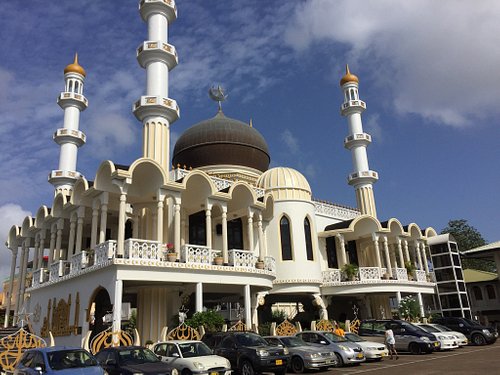
Commewijne: Where History Meets Nature
Nieuw Amsterdam
Nestled along the banks of the Commewijne River, Nieuw Amsterdam is a charming old town that holds great historical significance. Founded by the Dutch in 1734, it served as the capital of Suriname until it was replaced by Paramaribo in 1821. The town’s streets are lined with beautifully preserved colonial-era buildings, providing a glimpse into Suriname’s past.
Fort Nieuw Amsterdam
Dominating the landscape of Nieuw Amsterdam is Fort Nieuw Amsterdam, a fortification that once protected the colony from potential invasions. Here, you can explore the fort’s ramparts and admire the breathtaking views of the river and surrounding countryside. The on-site museum showcases artifacts from the colonial period and offers insights into the fort’s strategic role in Suriname’s history.
Mariënburg
Mariënburg, a former sugarcane plantation, offers a unique perspective on Suriname’s dark history of slavery. This plantation, established in the mid-19th century, was once the largest and most productive in the country. Today, the remnants of the plantation, including the sugar factory and workers’ housing, stand as reminders of the hardships endured by the enslaved Africans.
Galibi: A Cultural Oasis
Christiaan Cornelis
On the northeastern coast of Suriname lies Christiaan Cornelis, a small village with a rich history. This village, named after an escaped slave who became a revered leader among the Maroons, celebrates the resilience and spirit of the Maroon community. Immerse yourself in their vibrant culture, witness traditional dance performances, and indulge in delicious local cuisine.
Traditional Indigenous Villages
Suriname is home to several traditional indigenous villages, each offering a unique insight into the rich cultural heritage of the country’s indigenous peoples. These communities, such as Pikin Slee and Gunsi, embrace their ancestral customs and traditions, providing visitors with a chance to learn about their way of life, folklore, and spiritual beliefs.
Le Hapournouc
Le Hapournouc, an indigenous village nestled deep within the Surinamese rainforest, is a hidden gem that offers a truly immersive cultural experience. Here, you can participate in traditional ceremonies, learn the art of crafting intricate handicrafts, and embark on guided nature walks led by knowledgeable local guides.
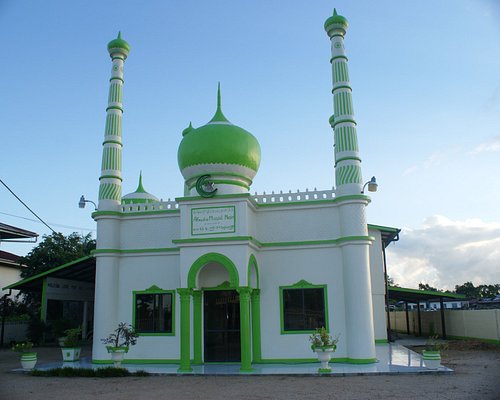
Brownsberg Nature Park: Nature’s Hidden Sanctuary
Spectacular Natural Beauty
Situated in the Brokopondo District, Brownsberg Nature Park boasts breathtaking natural beauty, making it a paradise for nature enthusiasts. Lush rainforests, cascading waterfalls, and stunning panoramic views of the Brokopondo Reservoir make this park a true gem of Suriname.
Rich Biodiversity
Brownsberg Nature Park is home to an incredible array of plant and animal species, some of which are endemic to Suriname. The park serves as a sanctuary for jaguars, capybaras, and countless species of birds, making it a haven for wildlife enthusiasts and birdwatchers.
Historical Significance
Brownsberg Nature Park also holds historical significance, as it was once the site of gold mining activities during Suriname’s colonial era. The remnants of old mining trails and equipment can still be seen, serving as a reminder of the region’s rich history and the pursuit of wealth that characterized the country’s past.
Jodensavanne: A Glimpse into Suriname’s Jewish Heritage
Historic Jewish Plantation
Jodensavanne, located on the Suriname River, was once a thriving Jewish community dating back to the 17th century. Jewish settlers fled persecution in Europe, seeking refuge in Suriname and establishing plantations along the riverbanks. While the community eventually migrated to Paramaribo, the remnants of their presence can still be seen in the form of cemetery ruins and historic landmarks.
Ruins of Synagogue
The ruins of Neveh Shalom, the oldest synagogue in the Western Hemisphere, stand as a poignant reminder of the once flourishing Jewish community in Jodensavanne. The remaining walls and arches evoke a sense of mystery and intrigue, transporting visitors to a bygone era.
Cultural Heritage
Jodensavanne is not only a place of historical significance but also a testament to Suriname’s commitment to preserving its diverse cultural heritage. The site has been recognized as a protected cultural heritage area, ensuring that future generations can explore and appreciate the rich tapestry of Suriname’s history.
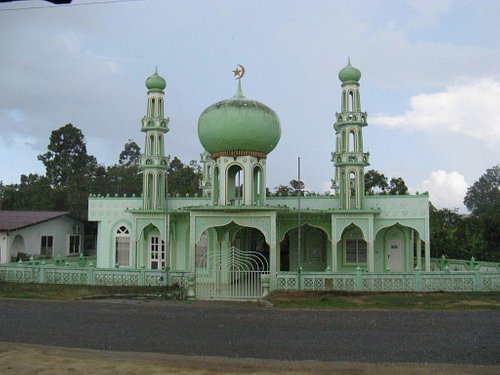
Central Suriname Nature Reserve: A Window into the Rainforest
Rainforests and Wildlife
Covering over 1.6 million hectares of pristine rainforest, the Central Suriname Nature Reserve is a haven for nature lovers and outdoor enthusiasts. This UNESCO World Heritage Site is home to a staggering variety of plant and animal species, including rare primates, jaguars, and giant river otters. Embark on guided hikes through the rainforest trails and be captivated by the symphony of sounds and the vibrant colors of the flora and fauna.
Protected Area
The Central Suriname Nature Reserve is of immense ecological importance, as it serves as a vital buffer zone for protecting Suriname’s unique biodiversity. The reserve is also crucial for maintaining the health and integrity of the surrounding ecosystems, including the rivers and waterways that sustain countless communities.
Importance for Research
Scientists from around the world flock to the Central Suriname Nature Reserve to study its diverse ecosystems and contribute to our understanding of the natural world. The reserve provides an invaluable platform for research and serves as a living laboratory, offering insights into the intricate relationships between species and the delicate balance of our planet’s ecosystems.
Fort Nieuw Amsterdam: A Glimpse into Suriname’s Colonial Past
Historical Dutch Fort
Fort Nieuw Amsterdam, located along the Suriname River, is an important landmark that sheds light on Suriname’s colonial history. Built in the 18th century by the Dutch, this fort served as a strategic defense against potential attacks from rival European powers. Today, visitors can explore the fort’s grounds, stroll along its walls, and immerse themselves in the stories of Suriname’s colonial past.
Museum and Exhibitions
Within the fort’s walls is the Fort Nieuw Amsterdam Museum, which houses a collection of artifacts and exhibits that showcase the region’s history. From the colonial era to the present day, the museum offers a comprehensive overview of Suriname’s journey, showcasing the diverse cultures and influences that have shaped the country.
Colonial Era Artifacts
The Fort Nieuw Amsterdam Museum is home to a wide range of colonial-era artifacts, including weaponry, pottery, and clothing. These artifacts provide tangible links to Suriname’s past and offer insights into the lives of the people who once called this fort their home.
Raleighvallen: A Journey Off the Beaten Path
Waterfalls and Granite Formations
Raleighvallen, located deep within the Surinamese rainforest, is a natural wonder that captivates all who visit. The area’s breathtaking waterfalls, such as the Voltzberg Falls and the Raleigh Falls, cascade down granite formations, creating a mesmerizing spectacle. As you stand in awe of these natural wonders, you can’t help but appreciate the raw power and timeless beauty of nature.
Hiking Trails and Nature Exploration
Raleighvallen is a paradise for outdoor enthusiasts, offering a network of well-maintained hiking trails that wind through the pristine rainforest. Along these trails, you can marvel at the diversity of plant and animal life, spot colorful birds, and encounter unique flora and fauna found only in this region.
Sir Walter Raleigh Connection
Raleighvallen derives its name from the famous English explorer, Sir Walter Raleigh, who embarked on a legendary expedition to find “El Dorado” in the late 16th century. Although his quest for gold was unsuccessful, his connection to this remote wilderness lives on through the eponymous falls and the awe-inspiring beauty of Raleighvallen.
Peperpot Nature Park: Where History Meets Conservation
Former Coffee and Cocoa Plantation
Peperpot Nature Park, located near the district of Commewijne, was once a thriving coffee and cocoa plantation during Suriname’s colonial era. Today, it stands as a testament to the country’s rich agricultural past and the labor that shaped its economy.
Ecological Significance
Peperpot Nature Park is not only a place of historical importance but also a sanctuary for biodiversity. The abandoned plantation has been reclaimed by nature, and the lush vegetation now offers a habitat for countless species of birds, mammals, and reptiles. Nature enthusiasts can embark on guided tours to explore the park’s trails, bike through the scenic landscapes, and witness the wonders of the natural world.
Birdwatching and Nature Tours
Birdwatchers flock to Peperpot Nature Park to catch a glimpse of the numerous bird species that call this park home. With over 250 recorded species, including the magnificent Scarlet Macaw and the vibrant Crimson Topaz hummingbird, this park is a paradise for ornithologists and nature photographers alike.
Conclusion
Suriname’s historical landmarks are not merely stone and mortar; they are a testament to a rich tapestry of cultures, struggles, and triumphs. They serve as a reminder of the importance of preserving our heritage and appreciating the diverse legacies that have shaped our world. As you explore the historical landmarks of Suriname, you embark on a journey through time, unraveling the stories embedded within each site. So come, be captivated by the wonders of Suriname, and unveil the past that continues to shape our present and future.